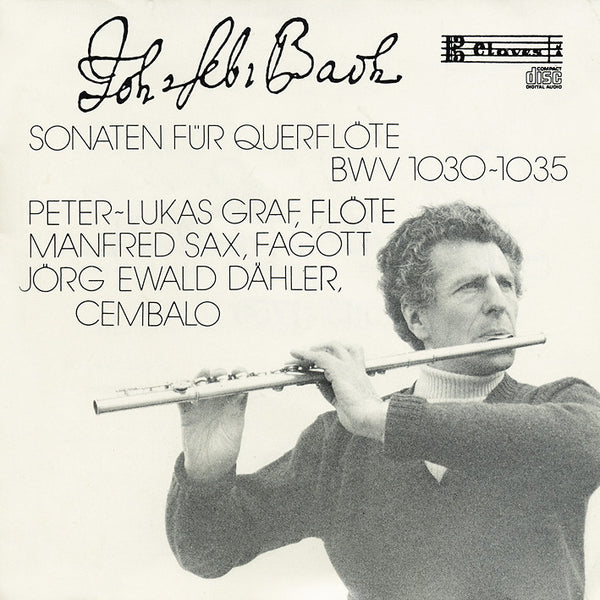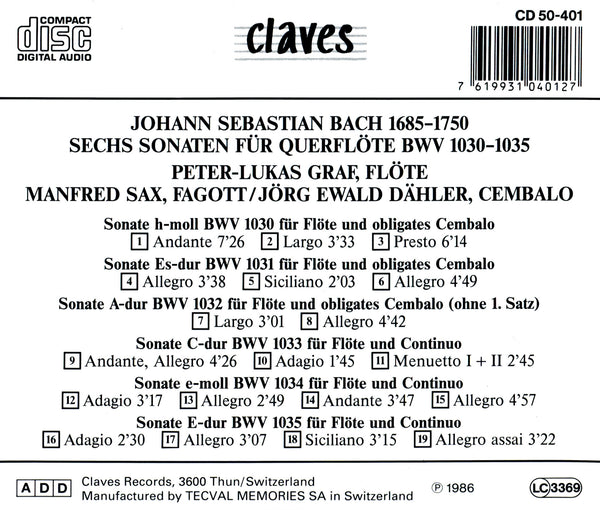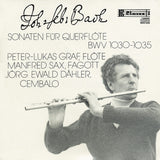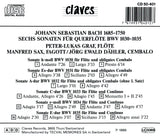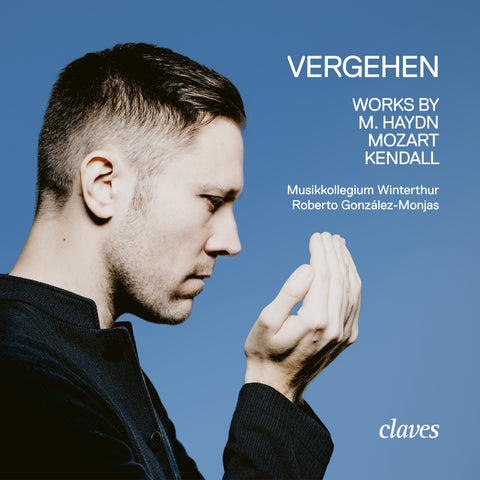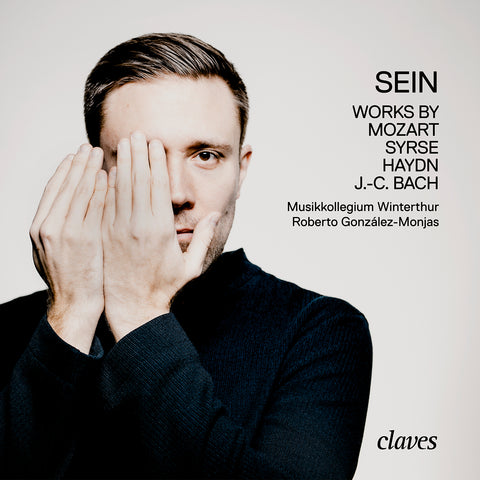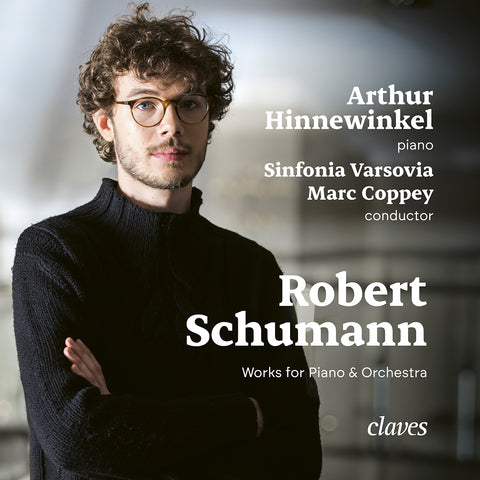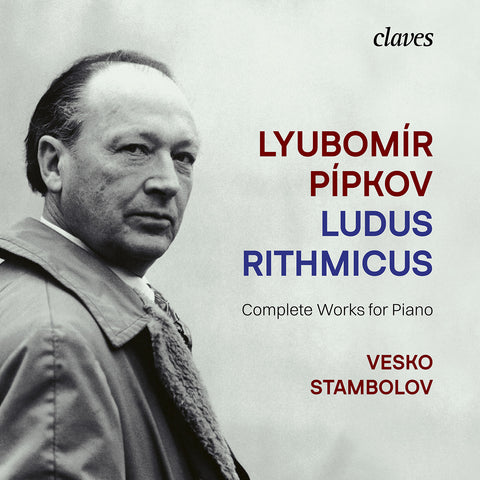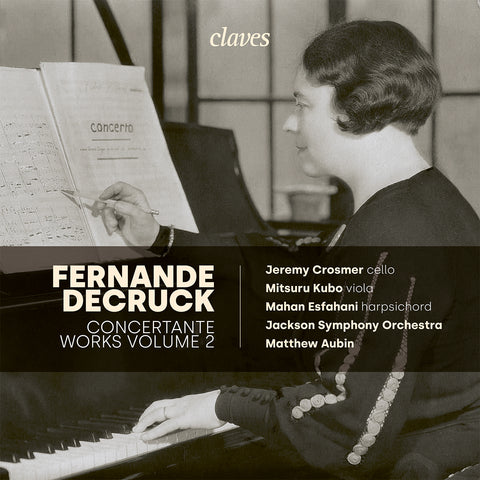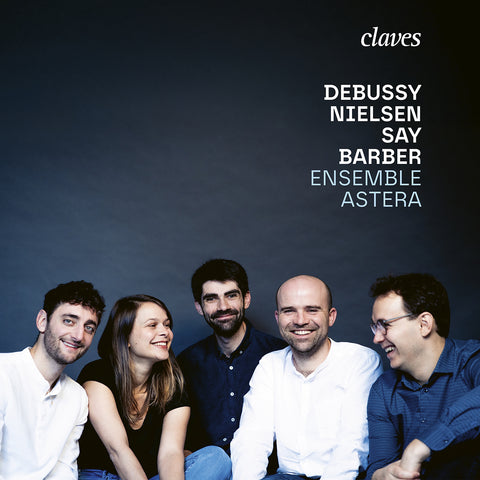(1986) Bach: Sonatas for Flute BWV 1030-1035
Kategorie(n): Alte Musik
Instrument(e): Fagott Flöte Cembalo
Hauptkomponist: Johann Sebastian Bach
CD-Set: 1
Katalog Nr.:
CD 0401
Freigabe: 1986
EAN/UPC: 7619931040127
- UPC: 829410603461
Dieses Album ist jetzt neu aufgelegt worden. Bestellen Sie es jetzt zum Sonderpreis vor.
CHF 18.50
Dieses Album ist nicht mehr auf CD erhältlich.
Dieses Album ist noch nicht veröffentlicht worden. Bestellen Sie es jetzt vor.
CHF 18.50
Dieses Album ist nicht mehr auf CD erhältlich.
Dieses Album ist nicht mehr auf CD erhältlich.
Inklusive MwSt. für die Schweiz und die EU
Kostenloser Versand
Dieses Album ist jetzt neu aufgelegt worden. Bestellen Sie es jetzt zum Sonderpreis vor.
CHF 18.50
Dieses Album ist nicht mehr auf CD erhältlich.
This album has not been released yet.
Pre-order it at a special price now.
CHF 18.50
Dieses Album ist nicht mehr auf CD erhältlich.
Dieses Album ist nicht mehr auf CD erhältlich.
SPOTIFY
(Verbinden Sie sich mit Ihrem Konto und aktualisieren die Seite, um das komplette Album zu hören)
BACH: SONATAS FOR FLUTE BWV 1030-1035
Von den Sonaten für deutsche Flöte, die Bach zugeschrieben werden, können nur fünf zu Recht als echte Werke des damaligen Kapellmeisters am Köthener Hof (um 1720) angesehen werden. In formaler Hinsicht unterscheiden sich diese Sonaten in dem Grad, in dem sie mit der viersätzigen „Sonata da chiesa“ sowie mit dem späteren dreisätzigen Sonatentyp und der aus mehreren Sätzen bestehenden „Sonata da camera“, die der Suite ähnelt, verwandt sind.
Die Sonate in C-Dur und die in b-Moll lassen sich in dieser Hinsicht nicht leicht klassifizieren. Im ersten Satz der C-Dur-Sonate folgt auf ein langsames Präludium eine meisterhafte Fantasie, deren Melodie gleichsam über einem Orgelpunkt schwebt; im Menuett I wird aus einem bezifferten Basso-Part ein ausgeschriebener Cembalopart. Darüber hinaus weicht die „galante“ Qualität dieses Menuetts von der spätbarocken Expressivität des Adagios in a-Moll ab.
Die Merkmale, die die viel nachdenklichere Sonate in b-Moll von den anderen Sonaten dieser Zeit unterscheiden, sind die Länge des ersten Satzes mit seinen chromatischen Spannungen sowie die Kombination eines fugierten Presto mit einem Allegro Gigue im letzten Satz. Ihr künstlerischer Wert – der sofort ins Auge fällt – lässt sich in fast jedem Aspekt der Komposition nachvollziehen.
In seiner Sonate in e-Moll hält sich Bach ganz streng an den Stil einer „Sonata da chiese“. Sowohl die Art und Weise, wie der Continuo im ersten Satz wiederholt die Flöte „cantabile“ aufgreift, als auch die Freiheit, mit der Bach die Bassstimme einsetzt (indem er sie wie eine Solostimme behandelt und dadurch einen chaconneartigen Effekt erzielt), sind erwähnenswert. Von ähnlichem Interesse ist der letzte Satz mit seinen beiden Themen.
Die Quelle der Sonate in Es-Dur ist eine Abschrift aus der Mitte des 18. Jahrhunderts, deren Titel in der Handschrift von Philipp Emanuel Bach geschrieben ist. Die Vermutung, dass ein jüngerer Mann als Bach der Komponist dieser Sonate sein könnte, wird durch die Tatsache gestützt, dass das Cembalo im ersten Satz eigene Motive beisteuert, die einen lebhaften Kontrast zu den Themen der Flötenstimme bilden, sowie durch die sensible Stimmung und den pastoralen Touch der Siciliana und die Häufigkeit, mit der parallele Terzen im dritten Satz vorkommen.
In allen vier Sätzen der E-Dur-Sonate begegnen wir Bach als Erfinder klangvoller Melodien; eine frei fließende, ausdrucksstarke Kantilene prägt den ersten Satz, ebenso wie ein „galanter“ und melodiöser Duktus in Siciliano-Form. In den beiden schnellen Sätzen erreicht Bach die melodischen Ideen, die in der späteren klassischen Musik zur Norm werden sollten.
In ihrer ausgeschriebenen dreistimmigen Harmonie ist die Sonate in A-Dur, deren Bassstimme komponiert ist, von besonderem Interesse. Sie unterstützt nicht nur, wie üblich, alle anderen Stimmen, sondern ist – insbesondere im langsamen Satz – von bemerkenswert melodiöser Qualität. Der unvollständige erste Satz, der nur schwer zufriedenstellend rekonstruiert werden kann, wurde in der vorliegenden Aufnahme weggelassen.
Einige Anmerkungen zu den Darbietungen auf dieser Aufnahme: In barocken Kompositionen mit beziffertem Continuo steht es den Interpreten frei, ihr eigenes Bassinstrument zu wählen. In den meisten Fällen entschieden sie sich für die Bassgambe und tun dies auch heute noch. Für diese Aufnahme wurde ein Fagott verwendet – eine Idee, die den zusätzlichen Vorteil hat, den zweistimmigen Kontrapunkt deutlich von der Flöte abzuheben und auch das Cembalo klar von den beiden Blasinstrumenten zu kontrastieren.
Es stimmt zwar, dass es gelegentlich üblich war, wie bei Sonaten, dass ein Cembalo die Bassstimme verstärkte, aber diese Praxis wurde aufgegeben, da sie bei einer dreistimmigen Komposition (d. h. zwei gleichwertige Diskantstimmen, die von der Flöte und der rechten Hand des Cembalisten gespielt werden, sowie eine Bassstimme, die von der linken Hand des Cembalisten gespielt wird) nicht erforderlich war.
Für diese Aufnahme wurden ausschließlich moderne Instrumente verwendet – der Cembalist berücksichtigt jedoch, dass Bach keine mechanischen Pedale hatte, wenn er seine Register benutzte. Ein Registerwechsel im Verlauf ein und desselben Werkes wurde daher nur in dem Umfang vorgenommen, wie es im Barockzeitalter mit den wenigen damals verfügbaren Registern möglich war.
Übersetzt aus dem Englischen mit www.DeepL.com/Translator
(1986) Bach: Sonatas for Flute BWV 1030-1035 - CD 0401
Von den Sonaten für deutsche Flöte, die Bach zugeschrieben werden, können nur fünf zu Recht als echte Werke des damaligen Kapellmeisters am Köthener Hof (um 1720) angesehen werden. In formaler Hinsicht unterscheiden sich diese Sonaten in dem Grad, in dem sie mit der viersätzigen „Sonata da chiesa“ sowie mit dem späteren dreisätzigen Sonatentyp und der aus mehreren Sätzen bestehenden „Sonata da camera“, die der Suite ähnelt, verwandt sind.
Die Sonate in C-Dur und die in b-Moll lassen sich in dieser Hinsicht nicht leicht klassifizieren. Im ersten Satz der C-Dur-Sonate folgt auf ein langsames Präludium eine meisterhafte Fantasie, deren Melodie gleichsam über einem Orgelpunkt schwebt; im Menuett I wird aus einem bezifferten Basso-Part ein ausgeschriebener Cembalopart. Darüber hinaus weicht die „galante“ Qualität dieses Menuetts von der spätbarocken Expressivität des Adagios in a-Moll ab.
Die Merkmale, die die viel nachdenklichere Sonate in b-Moll von den anderen Sonaten dieser Zeit unterscheiden, sind die Länge des ersten Satzes mit seinen chromatischen Spannungen sowie die Kombination eines fugierten Presto mit einem Allegro Gigue im letzten Satz. Ihr künstlerischer Wert – der sofort ins Auge fällt – lässt sich in fast jedem Aspekt der Komposition nachvollziehen.
In seiner Sonate in e-Moll hält sich Bach ganz streng an den Stil einer „Sonata da chiese“. Sowohl die Art und Weise, wie der Continuo im ersten Satz wiederholt die Flöte „cantabile“ aufgreift, als auch die Freiheit, mit der Bach die Bassstimme einsetzt (indem er sie wie eine Solostimme behandelt und dadurch einen chaconneartigen Effekt erzielt), sind erwähnenswert. Von ähnlichem Interesse ist der letzte Satz mit seinen beiden Themen.
Die Quelle der Sonate in Es-Dur ist eine Abschrift aus der Mitte des 18. Jahrhunderts, deren Titel in der Handschrift von Philipp Emanuel Bach geschrieben ist. Die Vermutung, dass ein jüngerer Mann als Bach der Komponist dieser Sonate sein könnte, wird durch die Tatsache gestützt, dass das Cembalo im ersten Satz eigene Motive beisteuert, die einen lebhaften Kontrast zu den Themen der Flötenstimme bilden, sowie durch die sensible Stimmung und den pastoralen Touch der Siciliana und die Häufigkeit, mit der parallele Terzen im dritten Satz vorkommen.
In allen vier Sätzen der E-Dur-Sonate begegnen wir Bach als Erfinder klangvoller Melodien; eine frei fließende, ausdrucksstarke Kantilene prägt den ersten Satz, ebenso wie ein „galanter“ und melodiöser Duktus in Siciliano-Form. In den beiden schnellen Sätzen erreicht Bach die melodischen Ideen, die in der späteren klassischen Musik zur Norm werden sollten.
In ihrer ausgeschriebenen dreistimmigen Harmonie ist die Sonate in A-Dur, deren Bassstimme komponiert ist, von besonderem Interesse. Sie unterstützt nicht nur, wie üblich, alle anderen Stimmen, sondern ist – insbesondere im langsamen Satz – von bemerkenswert melodiöser Qualität. Der unvollständige erste Satz, der nur schwer zufriedenstellend rekonstruiert werden kann, wurde in der vorliegenden Aufnahme weggelassen.
Einige Anmerkungen zu den Darbietungen auf dieser Aufnahme: In barocken Kompositionen mit beziffertem Continuo steht es den Interpreten frei, ihr eigenes Bassinstrument zu wählen. In den meisten Fällen entschieden sie sich für die Bassgambe und tun dies auch heute noch. Für diese Aufnahme wurde ein Fagott verwendet – eine Idee, die den zusätzlichen Vorteil hat, den zweistimmigen Kontrapunkt deutlich von der Flöte abzuheben und auch das Cembalo klar von den beiden Blasinstrumenten zu kontrastieren.
Es stimmt zwar, dass es gelegentlich üblich war, wie bei Sonaten, dass ein Cembalo die Bassstimme verstärkte, aber diese Praxis wurde aufgegeben, da sie bei einer dreistimmigen Komposition (d. h. zwei gleichwertige Diskantstimmen, die von der Flöte und der rechten Hand des Cembalisten gespielt werden, sowie eine Bassstimme, die von der linken Hand des Cembalisten gespielt wird) nicht erforderlich war.
Für diese Aufnahme wurden ausschließlich moderne Instrumente verwendet – der Cembalist berücksichtigt jedoch, dass Bach keine mechanischen Pedale hatte, wenn er seine Register benutzte. Ein Registerwechsel im Verlauf ein und desselben Werkes wurde daher nur in dem Umfang vorgenommen, wie es im Barockzeitalter mit den wenigen damals verfügbaren Registern möglich war.
Übersetzt aus dem Englischen mit www.DeepL.com/Translator
Return to the album | Read the booklet | Composer(s): Johann Sebastian Bach | Main Artist: Peter-Lukas Graf







